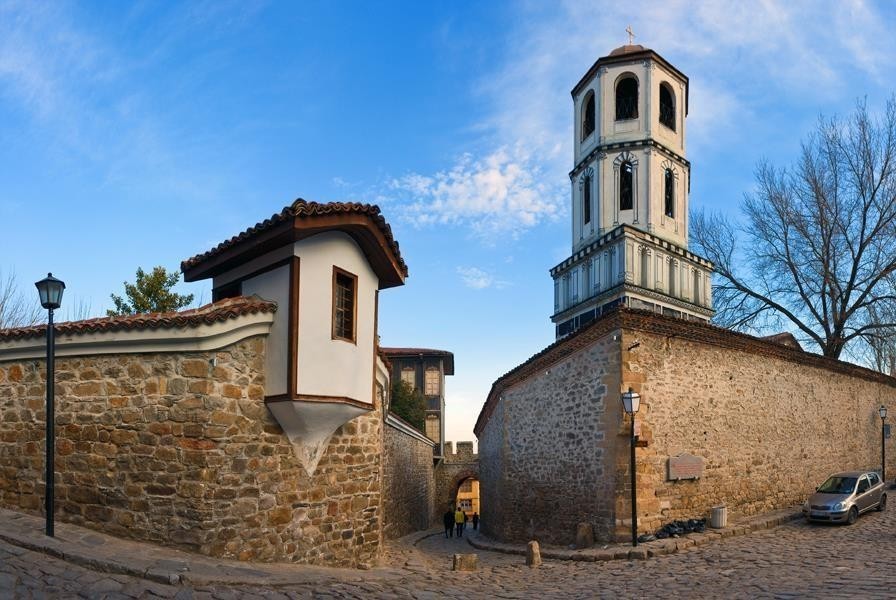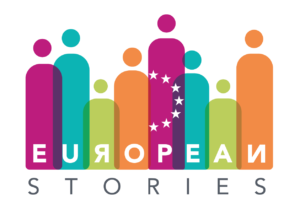Case 1: Story based on the historical past and national history. Construction of touristic landscape

Each historical period leaves its mark and in practice there are two parallel cities: the ancient, which is located underground, and another – modern, which lives and pulsates. Today we can still see the traces left by the Thracians, Romans and Greeks, monuments from the Middle Ages, architectural samples from the Bulgarian Renaissance.
In modern times, the coexistence of different civilizations and cultures is manifested and visible: Thracian, Roman, Byzantine, Bulgarian, Ottoman, Islamic, Christian. The heritage is valued as a wealth of the country and is accepted as a kind of emblem of national affiliation. This phenomenon fits into the ongoing Revival process of constructing the Bulgarian nation and repeats the European model of creating national iconography, using monuments and traces of the past, art.
First traces of human settlement in Plovdiv
Thracians founded the city Evmolpia (named after the Thracian king Evmolp)
Philip II of Macedon (the father of Alexander the Great) conquered the city and renamed it Philipopolis (the city of Philip)
Romans conquered Philipopolis and called it Trimontium (the City of Three Hills)
The city remained under the Eastern Roman Empire (Byzantium)
Conquered by Bulgarians, permanently annexed in 834 to Bulgarian Empire (founded in 681)
Conquered by the Ottoman Empire and renamed Filibe
Plovdiv was liberated and became the capital of the autonomous province of Eastern Rumelia
The Unification of Bulgaria
Puldin/Ploudin/Pulden/Populdin - the name given to the city by the Slavs.
- What is the history of the place that you know or you would like to visit?
- What are the key sites, representative for particular historical periods, included in official web pages, videos, blogs, and social medias, etc.
- What are the messages for the local and international tourist?
Case 2: Story based on the European contexts

To quote Halbwachs (1987, p. 89) collective memory is “a continuous current of thought, of a continuity that is by no means artificial, because it conserves nothing from the past except the parts which still live, or are capable of living in the conscience of the group.”
Each generation re-thing and re-shape the past according to shared needs, values, and beliefs.
The past is not a static dimension
The past changes according to the requirements of the present
“Society” represents the past according to the
Circumstances and according to the times
The past is merely a construction
The past is a collective image elaborated in the present and for the present
Reasons To Visit Plovdiv: The Oldest City In Europe suggested by plovdivcitycard.com
1. The Old Town of Plovdiv is a Living Museum (UNESCO World Heritage Cite)
2. There are impressive ruins from Roman times that you can still see around the city today (European civilisation)
3. A pedestrian-friendly centre that makes it easier for visitors to see the key sights of the town on foot (a modern European city)
4. You can buy some really unique and authentic traditional souvenirs and products to remember Plovdiv by (Authenticity)
5. Plovdiv is the city of Seven Hills (As the seven hills of Rome)”
- What are national dimensions of the story of your tourist destination?
- How the national story is placed in the larger European story from certain periods?
- Place your story to the bigger narratives.
Case 3: Story based on cultural diversity

Among the groups that have permanent positions in the city and which are more visible, we can include Bulgarians (Orthodox, Catholics, Protestants, Muslims), Jews, Armenians, Gypsies, Turks, migrants from different regions. The construction of their identity thought of as a common origin and a common destiny goes through the accumulation of collective memory and common values that are passed down from generation to generation. The territory is an important factor in the expression of collective identity.
The archaeological and historical evidences, missionaries and diplomats’ reports, as well as travellers co-construct the image of that intercultural nature of Plovdiv. They are telling stories about the picturesque coexistence between those diverse ethnic and religious communities.

- The ethnic neighborhoods show how different cultures coexist;
- They make visible inter-community relations;
- The ethnic and religious communities are creating their own significant places (religious buildings, community centers, cultural institutions, and monuments)
In Plovdiv, alongside Bulgarian, there are Armenian, Jewish, Turkish, Greek, and Roma neighbourhoods.
Inesa Gevoruan is teaching Armenian language in the Armenian Scholl at Plovdiv. She shears her insides about the “Armenian places” in Plovdiv, her vision about the city and her favourite place. These videos show the intercultural context of storytelling through the variety of languages a story might be told.
Watch the video “Plovdiv (Bulgaria) – The World’s Sixth Oldest Town” by Stefan Apostolov
Try to “uncover” the communities and their places in the architectural narrative
- What is the community that you want to present to the tourists?
- How the people create their story about the places, people and events, who are significant for your tourist destination?
- How their story/stories enrich dominant narrative?
Case 4: Story based on the contested past. The period of communism

Socialist Bulgaria aims to create a new socialist nation. It must rest on the union of workers and peasants, and cultural and religious differences must be erased. This finds a place in urban policies.
Many of the old buildings have been demolished or changed their purpose.
New neighbourhoods are being built with large apartment blocks, which accommodate people of different origins. Public spaces are filled with monuments that suggest the value of communist ideas.
Centuries of coexistence allow people to notice otherness and to accept cultural differences. Interpersonal relationships play an important role in the process of continuously building the understanding and practice of living together. They give people the opportunity to share the weekday and the holiday with the other, to get closer to him and to understand him. Modern institutions such as schools, government agencies, trade unions and non-governmental organizations, etc. support the building of civic consciousness, which allows for the expansion of intercultural relations.
